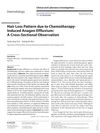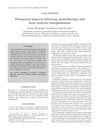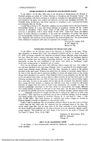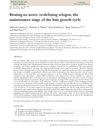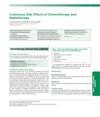Chemotherapy-Induced Anagen Effluvium: Diffuse or Patterned?
January 2007
in “
Dermatology
”
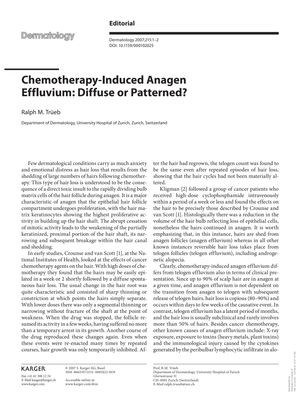
TLDR Chemotherapy can cause rapid, extensive hair loss, with patterns varying between individuals.
The document discusses chemotherapy-induced anagen effluvium, a type of hair loss that occurs due to the toxic effects of chemotherapy on the rapidly dividing cells of the hair follicle during the anagen phase. Early studies by Crounse and van Scott found that high doses of chemotherapy could lead to easy epilation and diffuse hair loss, while lower doses caused only segmental thinning without hair shaft fracture. Kligman's study on patients receiving high-dose cyclophosphamide confirmed these findings, noting that despite the reduction in hair bulb volume, the hair remained in anagen phase. Anagen effluvium is characterized by rapid and extensive hair loss, as opposed to telogen effluvium, which has a latent period and less hair loss. The document also mentions that factors such as the phase of hair growth at the time of insult, the intensity and duration of the insult, and the synchronization of hair cycles influence the pattern of hair loss. While chemotherapy-induced anagen effluvium has been traditionally seen as acute diffuse hair loss, a study by Yun and Kim in the same issue of Dermatology suggests that it can present with distinct patterns and differs between men and women. The document concludes by suggesting that understanding the mechanisms of chemotherapy-induced hair loss could aid in developing more effective management strategies for this condition.
